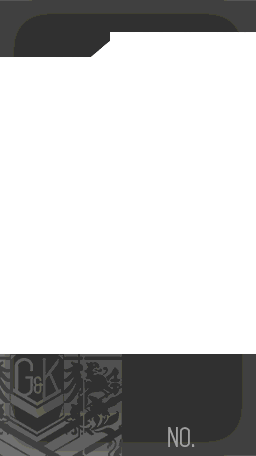Ranking of this Doll's specs relative to other Dolls of the same type.
Simonov: Difference between revisions
No edit summary |
No edit summary |
||
| (31 intermediate revisions by 21 users not shown) | |||
| Line 1: | Line 1: | ||
{{ | {{PlayableUnit | ||
|index = 41 | |index = 41 | ||
|nationality = Soviet Union | |nationality = Soviet Union | ||
|classification = | |classification = RF | ||
|rarity = 2 | |rarity = 2 | ||
|manufacturer = | |faction = [[Griffin & Kryuger]] | ||
|manufactureringame = [[I.O.P.]] | |||
|manufacturer = Tula Armory | |||
|fullname = Samozaryadnyj Karabin sistemy Simonova, 1945 | |fullname = Samozaryadnyj Karabin sistemy Simonova, 1945 | ||
|voiceactor = Aya | |artist = {{artist name|phantania}} | ||
|voiceactor = {{voice actor name|Suzaki Aya}} | |||
|releasedon = {{doll_server_alias|server=CN|alias=西蒙诺夫|year=2016|month=5}}, {{doll_server_alias|server=TW|alias=西蒙諾夫}}, {{doll_server_alias|server=KR|alias=시모노프}}, {{doll_server_alias|server=EN|alias=SKS}}, {{doll_server_alias|server=JP|alias=SKS}} | |||
|weaponinfo = | |||
The SKS is a Soviet semi-automatic carbine chambered for the 7.62×39mm round, designed in 1943 by Sergei Gavrilovich Simonov. Its complete designation, SKS-45, is an abreviation of 'Samozaryadnyj Karabin sistemy Simonova, 1945' (Russian: Самозарядный карабин системы Симонова, 1945; Self-loading Carbine of (the) Simonov system, 1945). The SKS was adopted by the Soviet Union after the Second World War as a replacement for their Mosin-Nagant bolt-action rifles, which had served as Russia's primary service weapon since the days of the Tsar. While simple to manufacture, reliable, and inexpensive, the SKS's lack of select-fire capability and its limited 10-round capacity would see it rendered obsolete with the introduction of the AK-47 in the early 1950's. Nevertheless, SKS carbines continued to see service with the Soviet Border Troops, Internal Troops, and second-line and reserve army units for decades.<ref name= "wiki">[[wikipedia:SKS|Wikipedia entry on the SKS carbine]]</ref> | |||
During World War 2, many nations found that their standard infantry rifles were insufficient or outdated. Many were long and heavy, firing powerful cartridges that produced excessive recoil. Cartridges such as the 8×57mm Mauser, .303 British, .30-06 Springfield, and 7.62×54mmR, were effective in rifles to ranges of up to 1,000 meters (1,100 yards), but most firefights took place at maximum ranges of between 100 and 300 metres (110 and 330 yards). Only a highly trained specialist, such as a sniper, could employ the full-power rifle cartridge to its true potential. Both the Soviet Union and Germany realized this during the war, and designed new firearms for smaller, intermediate-power cartridges. This led the Soviet Union to develop the 7.62x39mm cartridge, one of the most widely-used and prolific firearms calibers in the world. Towards the end of the war, work was already underway developing a new infantry rifle capable of chambering this new round. In 1944, Sergei Simonov, the Russian arms designer responsible for the AVS-36 semi-automatic rifle and the PTRS anti-tank rifle, scaled down the system used in his anti-tank rifle to fire the new intermediate cartridge. Field trials of Simonov's new rifle were conducted in the closing years of the war, with a pre-production run of the SKS being sent to Soviet soldiers participating in the Belorussian Offensive (Operation Bagration) of late 1944/early 1945. After some final tweaking, the weapon was officially adopted as the SKS-45. | |||
The SKS has a conventional layout, with a wooden stock and rifle grip. It is a gas-operated firearm, with a spring-loaded bolt carrier and gas piston that work to unlock and cycle the action via gas pressure exerting pressure against them. The bolt is locked to contain the pressure of ignition at the moment of firing by tilting downwards at its rear and being held by a lug milled into the receiver. At the moment of firing, the bolt carrier is pushed rearwards, which causes it to lift the bolt, unlocking it, and allowing it to be carried rearwards against a spring. This allows the fired case to be ejected and a new round from the magazine to be carried into the chamber. The SKS represents an intermediate step in the process towards the development of true assault rifles, being shorter and less powerful than the semi-automatic rifles that preceded it, such as the Soviet SVT-40, but being longer (10 cm or 4in) than the AK-series rifles which replaced it, and as a result has a higher muzzle velocity. The SKS's ten-round internal box magazine can be loaded either by hand or from a stripper clip. Cartridges stored in the magazine can be removed by pulling back on a latch located forward of the trigger guard (thus opening the "floor" of the magazine and allowing the rounds to fall out). | |||
While early (1949–50) Soviet models had spring-loaded firing pins, which held the pin away from cartridge primers until struck by the action's hammer, most variants of the SKS have a free-floating firing pin within the bolt. Because of this design, care must be taken during cleaning (especially after long storage packed in Cosmoline) to ensure that the firing pin can freely move and does not stick in the forward position within the bolt. SKS firing pins that are stuck in the forward position have been known to cause accidental "slamfires" (the rifle firing on its own, without pulling the trigger and often without being fully locked). This behavior is less likely with the hard primer military-spec ammo for which the SKS was designed, but as with any rifle, users should properly maintain their firearms. The SKS is easily field stripped and reassembled without specialized tools, and the trigger group and magazine can be removed with an unfired cartridge, or with the receiver cover. The rifle has a cleaning kit stored in a trapdoor in the buttstock, with a cleaning rod running under the barrel, in the same style as the AK-47. The cap for the cleaning kit also serves as a cleaning rod guide, to protect the crown from being damaged during cleaning. The body of the cleaning kit serves as the cleaning rod handle. | |||
One of the SKS's most distinctive features is its attached bayonet. All military SKS rifles have a bayonet attached to the underside of the barrel, which is extended and retracted via a spring-loaded hinge. Both blade and spike bayonets were produced. The Yugoslavian-made M59/66 and M59/66A1 variants are the only SKS models with an integral grenade launching attachment. | |||
The SKS was manufactured at the Tula Arsenal from 1945 to 1958, and at the Izhevsk Arsenal from 1953 to 1954, resulting in a total Soviet production of about 2.7 million carbines. Although the quality of Soviet-made SKS carbines manufactured at these state-run arsenals was quite high, its design was already obsolete compared to the Kalashnikov which was selective-fire, lighter, had three times the magazine capacity, and had the potential to be less labor-intensive to manufacture. Gradually over the next few years, AK-47 production increased until the extant SKS carbines in service were relegated primarily to non-infantry and to second-line troops. They remained in service in this fashion even as late as the 1980s, and possibly the early 1990s. The SKS was the standard service rifle used by Soviet Air Defense Forces to guard anti-aircraft sites until at least the late 1980s. To this day, the SKS carbine is used by some ceremonial Russian honor guards, in much the same way the M14 Rifle is used within the United States. Beginning in the 1980s, a number were also sold on the civilian market in North America, where they remain popular as hunting and sporting rifles. | |||
The SKS also saw extensive use outside of the Soviet Union, as during the Cold War, the Soviets shared the SKS design and manufacturing details with its allies. This resulted in a wide number of derivatives and variants being produced. Some variants use gas port controls, flip-up night sights, and prominent, muzzle-mounted grenade launchers. Millions of additional SKS carbines and their derivatives were manufactured under license in the People’s Republic of China, as well as a number of countries allied with the Eastern Bloc, including Yugoslavia, Albania, North Korea, North Vietnam, East Germany, and Romania. This widespread manufacture of the rifle has led the SKS to become the ninth most produced self-loading rifle design in history. While remaining far less ubiquitous than the AK-47, both original Soviet rifles and foreign variants can still be found today in civilian hands as well as in the arsenals of insurgent groups and paramilitary forces around the world. | |||
|min_dmg= 39 | |min_dmg= 39 | ||
|max_dmg= 100 | |max_dmg= 100 | ||
| Line 19: | Line 38: | ||
|max_hp= 93 | |max_hp= 93 | ||
|mov= 7 | |mov= 7 | ||
|craft= 3:30:00 | |craft= 3:30:00 | ||
|noheavycraft = 1 | |||
|drop=Can be obtained from many battle stages from Chapter 2-6 onward. | |||
|aura1= Affects handguns | |aura1= Affects handguns | ||
|aura2= | |aura2= Reduces skill cooldown by 10% | ||
|tile2= 1 | |tile2= 1 | ||
|tile8= 1 | |tile8= 1 | ||
| | |tile5 = 0 | ||
| | |gallery=<gallery> | ||
| | File:Simonov_S.png|Profile image | ||
File:Simonov.png|Full artwork | |||
| | File:Simonov_D.png|Full damaged artwork | ||
</gallery> | |||
| | |||
|galleryAlt=<gallery> | |||
File:Simonov_D (Censored).png|Full damaged artwork (Censored) | |||
| | File:Simonov_Beta.png|Illustrations during Girls' Frontline betas. | ||
| | File:Simonov_D_Beta.png | ||
| | </gallery> | ||
| | |trivia = | ||
*SKS randomly appears in the skill training menu animation instead of the dummy target for unknown reasons. This was considered a bug at first and was removed, but this was later re-implemented as an easter egg.<ref>[https://zh.moegirl.org/少女前线:西蒙诺夫 Moegirl entry on Simonov]</ref> This is referenced during the story of the [[Bounty Feast]] collab event and in the completion bonus for the Great Library [[Furniture]] set, where the haunted book can show a picture of Simonov with an apple on her head, William Tell-style. | |||
*Her name was initially "Simonova" on the EN server, but it was changed to "SKS" on October 9th, 2018. On the JP server, she was called "SKS" from the beginning. | |||
*When firing, her hand drops below the handle, implying she is holding the gun by a pistol grip that does not exist. | |||
}} | |||
[[Category:T-Dolls with censoring]] | |||
Latest revision as of 18:07, 2 August 2024
| Simonov | Story | Quotes |
Simonov 41   | |
| Gun Information | |
|---|---|
| Full name | Samozaryadnyj Karabin sistemy Simonova, 1945 |
| Country of origin | Soviet Union |
| Manufacturer | Tula Armory |
| Game Information | |
| Faction | Griffin & Kryuger |
| Manufactured / Revised by |
I.O.P. |
| Voice actor | Suzaki Aya |
| Artist | phantania |
| Released on | CN (西蒙诺夫) (2016-5), TW (西蒙諾夫), KR (시모노프), EN (SKS), JP (SKS) |
| Chibi Animation | |
| Variant:
Click the marked area to switch between animations. For details regarding animations, please see Animations on the Wiki. | |
| View page template | |
How to obtain[edit]
NORMALHEAVY Timer 3:30:00. See T-Doll Production for details.
DROP Can be obtained from many battle stages from Chapter 2-6 onward.
REWARD Not obtained as a reward
Exclusive Equipment[edit]
There is no exclusive equipment for this T-Doll.
Union Skill[edit]
There is no union skill for this T-Doll.
Stats / Data[edit]
| 47(x1) → 93(x1) / 465(x5) | 15(x1) / 55(x5) | 30(x1) / 90(x5) |
|
| ||||||||
|
| ||||||||
| 7 | 0 | ||||||||
| 40% | 50% | ||||||||
| 15 |
Ranking of this Doll's specs relative to every other Doll.
Weapon Background[edit]
The SKS is a Soviet semi-automatic carbine chambered for the 7.62×39mm round, designed in 1943 by Sergei Gavrilovich Simonov. Its complete designation, SKS-45, is an abreviation of 'Samozaryadnyj Karabin sistemy Simonova, 1945' (Russian: Самозарядный карабин системы Симонова, 1945; Self-loading Carbine of (the) Simonov system, 1945). The SKS was adopted by the Soviet Union after the Second World War as a replacement for their Mosin-Nagant bolt-action rifles, which had served as Russia's primary service weapon since the days of the Tsar. While simple to manufacture, reliable, and inexpensive, the SKS's lack of select-fire capability and its limited 10-round capacity would see it rendered obsolete with the introduction of the AK-47 in the early 1950's. Nevertheless, SKS carbines continued to see service with the Soviet Border Troops, Internal Troops, and second-line and reserve army units for decades.[1]
During World War 2, many nations found that their standard infantry rifles were insufficient or outdated. Many were long and heavy, firing powerful cartridges that produced excessive recoil. Cartridges such as the 8×57mm Mauser, .303 British, .30-06 Springfield, and 7.62×54mmR, were effective in rifles to ranges of up to 1,000 meters (1,100 yards), but most firefights took place at maximum ranges of between 100 and 300 metres (110 and 330 yards). Only a highly trained specialist, such as a sniper, could employ the full-power rifle cartridge to its true potential. Both the Soviet Union and Germany realized this during the war, and designed new firearms for smaller, intermediate-power cartridges. This led the Soviet Union to develop the 7.62x39mm cartridge, one of the most widely-used and prolific firearms calibers in the world. Towards the end of the war, work was already underway developing a new infantry rifle capable of chambering this new round. In 1944, Sergei Simonov, the Russian arms designer responsible for the AVS-36 semi-automatic rifle and the PTRS anti-tank rifle, scaled down the system used in his anti-tank rifle to fire the new intermediate cartridge. Field trials of Simonov's new rifle were conducted in the closing years of the war, with a pre-production run of the SKS being sent to Soviet soldiers participating in the Belorussian Offensive (Operation Bagration) of late 1944/early 1945. After some final tweaking, the weapon was officially adopted as the SKS-45.
The SKS has a conventional layout, with a wooden stock and rifle grip. It is a gas-operated firearm, with a spring-loaded bolt carrier and gas piston that work to unlock and cycle the action via gas pressure exerting pressure against them. The bolt is locked to contain the pressure of ignition at the moment of firing by tilting downwards at its rear and being held by a lug milled into the receiver. At the moment of firing, the bolt carrier is pushed rearwards, which causes it to lift the bolt, unlocking it, and allowing it to be carried rearwards against a spring. This allows the fired case to be ejected and a new round from the magazine to be carried into the chamber. The SKS represents an intermediate step in the process towards the development of true assault rifles, being shorter and less powerful than the semi-automatic rifles that preceded it, such as the Soviet SVT-40, but being longer (10 cm or 4in) than the AK-series rifles which replaced it, and as a result has a higher muzzle velocity. The SKS's ten-round internal box magazine can be loaded either by hand or from a stripper clip. Cartridges stored in the magazine can be removed by pulling back on a latch located forward of the trigger guard (thus opening the "floor" of the magazine and allowing the rounds to fall out).
While early (1949–50) Soviet models had spring-loaded firing pins, which held the pin away from cartridge primers until struck by the action's hammer, most variants of the SKS have a free-floating firing pin within the bolt. Because of this design, care must be taken during cleaning (especially after long storage packed in Cosmoline) to ensure that the firing pin can freely move and does not stick in the forward position within the bolt. SKS firing pins that are stuck in the forward position have been known to cause accidental "slamfires" (the rifle firing on its own, without pulling the trigger and often without being fully locked). This behavior is less likely with the hard primer military-spec ammo for which the SKS was designed, but as with any rifle, users should properly maintain their firearms. The SKS is easily field stripped and reassembled without specialized tools, and the trigger group and magazine can be removed with an unfired cartridge, or with the receiver cover. The rifle has a cleaning kit stored in a trapdoor in the buttstock, with a cleaning rod running under the barrel, in the same style as the AK-47. The cap for the cleaning kit also serves as a cleaning rod guide, to protect the crown from being damaged during cleaning. The body of the cleaning kit serves as the cleaning rod handle.
One of the SKS's most distinctive features is its attached bayonet. All military SKS rifles have a bayonet attached to the underside of the barrel, which is extended and retracted via a spring-loaded hinge. Both blade and spike bayonets were produced. The Yugoslavian-made M59/66 and M59/66A1 variants are the only SKS models with an integral grenade launching attachment.
The SKS was manufactured at the Tula Arsenal from 1945 to 1958, and at the Izhevsk Arsenal from 1953 to 1954, resulting in a total Soviet production of about 2.7 million carbines. Although the quality of Soviet-made SKS carbines manufactured at these state-run arsenals was quite high, its design was already obsolete compared to the Kalashnikov which was selective-fire, lighter, had three times the magazine capacity, and had the potential to be less labor-intensive to manufacture. Gradually over the next few years, AK-47 production increased until the extant SKS carbines in service were relegated primarily to non-infantry and to second-line troops. They remained in service in this fashion even as late as the 1980s, and possibly the early 1990s. The SKS was the standard service rifle used by Soviet Air Defense Forces to guard anti-aircraft sites until at least the late 1980s. To this day, the SKS carbine is used by some ceremonial Russian honor guards, in much the same way the M14 Rifle is used within the United States. Beginning in the 1980s, a number were also sold on the civilian market in North America, where they remain popular as hunting and sporting rifles.
The SKS also saw extensive use outside of the Soviet Union, as during the Cold War, the Soviets shared the SKS design and manufacturing details with its allies. This resulted in a wide number of derivatives and variants being produced. Some variants use gas port controls, flip-up night sights, and prominent, muzzle-mounted grenade launchers. Millions of additional SKS carbines and their derivatives were manufactured under license in the People’s Republic of China, as well as a number of countries allied with the Eastern Bloc, including Yugoslavia, Albania, North Korea, North Vietnam, East Germany, and Romania. This widespread manufacture of the rifle has led the SKS to become the ninth most produced self-loading rifle design in history. While remaining far less ubiquitous than the AK-47, both original Soviet rifles and foreign variants can still be found today in civilian hands as well as in the arsenals of insurgent groups and paramilitary forces around the world.
Gallery
Main artwork
Gallery consisting of artworks used primarily in-game. For information on how to obtain certain costumes, see Skin Catalogue.
-
Profile image
-
Full artwork
-
Full damaged artwork
Alternative artwork
Alternate gallery consisting of artworks with slight alterations as well as miscellaneous artworks.
-
Full damaged artwork (Censored)
-
Illustrations during Girls' Frontline betas.
Trivia
- SKS randomly appears in the skill training menu animation instead of the dummy target for unknown reasons. This was considered a bug at first and was removed, but this was later re-implemented as an easter egg.[2] This is referenced during the story of the Bounty Feast collab event and in the completion bonus for the Great Library Furniture set, where the haunted book can show a picture of Simonov with an apple on her head, William Tell-style.
- Her name was initially "Simonova" on the EN server, but it was changed to "SKS" on October 9th, 2018. On the JP server, she was called "SKS" from the beginning.
- When firing, her hand drops below the handle, implying she is holding the gun by a pistol grip that does not exist.
References[edit]
| List of T-Dolls |
|---|



















